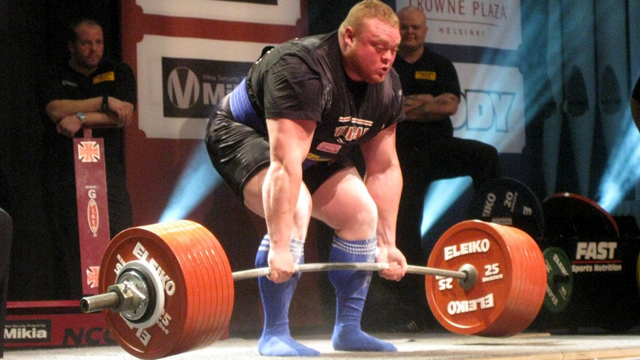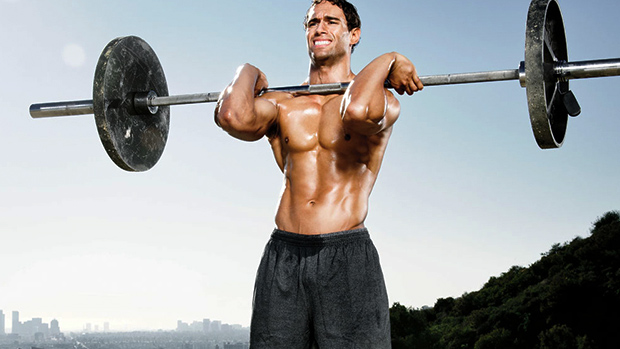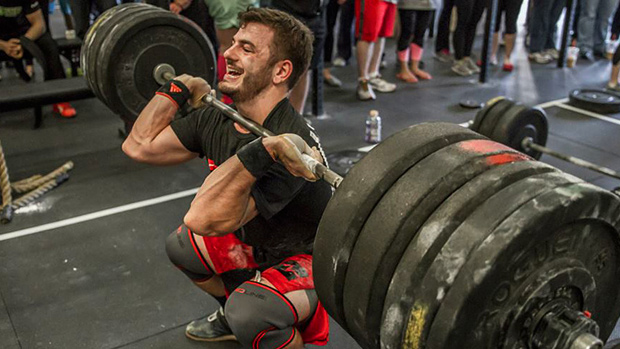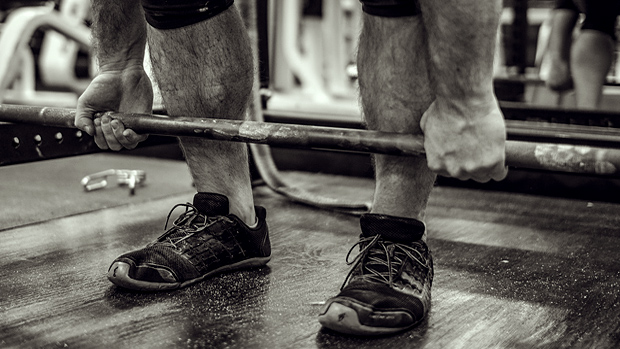Targeting the posterior chain is one of the most effective ways to improve hypertrophy, strength, and athletic performance.
Posterior chain (PC) refers to a complex series of muscles radiating along the backside of the body that's seemingly invisible to mirror-focused trainees.
That's a shame, as not only does a strong PC allow you to run faster, jump higher, and deadlift a Buick, it also looks damn impressive when developed to its full potential.
Hip hinge movements are among the best ways to target the PC, specifically the hamstrings. A hip hinge movement is any in which the hips are going through a large range of motion but the knees are not.
Squats and deadlifts may be the gold standard for lower body size and strength but they aren't pure hip hinge movements – as such, there are better exercises to hone in on the hamstrings and low back.
The following hip hinge variations will not only leave you walking like the morning after your first night on Riker's Island, they'll lead to an improved physique and stronger posterior chain.
Movements like the goblet squat are knee-dominant as there's a more upright posture and the knees go through a greater range of motion. In hinge movements like the kettlebell swing, however, there's little knee bend – the athlete is purely sitting back, hinging at the hips and popping them forward.
This subtle-yet-significant difference gets lifters into trouble when they try to good morning their squats and squat their deadlifts. While every movement requires a certain amount of both knee bend and hip motion, the elusive hip hinge tends to baffle even the most seasoned gym rat. This article will walk you through this delicate yet powerful action so that you may master it and start developing an enviable posterior chain of your own.
Bulgarian Goat Belly Swing
The goat belly swing is essentially a Zercher-style kettlebell good morning. I learned this move from Dan John at a seminar and I've yet to find a better way to teach the hinge movement to beginner and intermediate lifters.
It's also a great assistance exercise on a deload week for more advanced lifters or simply as a warm up before deadlifting.
Place a dumbbell or kettlebell in front of your belly and pull your chest "proud." Make sure you can wiggle your toes to ensure the weight is on your heels. Maintain a soft knee (not fully extended) and push your hips back against a wall. Fill your belly with air and push your stomach into the 'bell. This teaches proper spine positioning and develops intra abdominal pressure.
The wall teaches the role of sitting back – if the lifter tries to squat down they'll miss the wall. Standing about the length of your foot away from the wall is a good place to start, but experiment to find a distance that works best with your current mobility.
Cable Pull Through
Another tool to learn the hip hinge is the cable pull though. Set up a triceps rope on a low pulley and step out a few feet away from the cable stack. Pull your chest proud, pressurize the back of your neck (make a double chin), keep your eyes up, and allow the weight to pull your hips back into proper position. This also makes for a great assistance exercise when used for high reps.
Romanian Deadlift
The Romanian deadlift (RDL) or modified straight-leg deadlift is my go-to exercise to train the hip hinge pattern. Perform this movement just like the belly swing, focusing on sliding the bar up and down the thighs to ensure a strong lat contraction. Make sure to get a good stretch in the hamstrings. Finish with a hard glute contraction to help train proper lockout in a conventional deadlift.
To work your hamstrings extra hard, perform this movement with an eccentric emphasis (focusing on the lowering portion of the lift). By taking extra time to lower the barbell you'll be under tension longer, thereby inducing more hypertrophy.
Again, remember your hamstrings should feel a big stretch in the bottom. Keep a tight arch and sit back as far as you can.
Good Morning
Fellow powerlifter Mark Bell says they should change the name of this exercise to "bad weeks" as after a rough good morning workout, your whole week is screwed!
The good morning is essentially an RDL with the weight on your back. It's a great assistance exercise to bring up the squat since it mimics a "failed" position in a squat. If you tend to drift too far forward on maximum squat attempts, training good mornings can help with getting the bar back into proper position. These can be done with a variety of stances to place the emphasis on different muscles.
I typically use higher reps on this exercise and try to sit back while maintaining a tight arch. Many lifters mistakenly bend the knee too much and round their low backs, turning the movement into an ugly quarter squat. If you don't feel your hamstrings stretch in the bottom, you aren't performing a proper good morning.
If you're a wide stance squatter, try doing these with a wider stance. If you want to help your conventional pull, then try them with a narrow stance with the feet straight ahead.
Zercher Rack Deadlift
Many lifters struggle with the starting position in the deadlift. The next two rack exercises will build speed, power, and strength off the floor. Both moves are also concentric only, which transfers well to a max deadlift attempt, which is another concentric-only lift.
Any Zercher-style lift puts a huge demand on the upper back and core. Training these muscles helps you stay in better position during both the squat and deadlift.
Lifting from a dead stop position drastically increases starting strength. You need to be very explosive to get a weight moving from a dead stop, so this movement teaches your body to accelerate throughout the movement.
Be sure to use a bar pad, towel, or other form of padding so you don't beat up your elbows and biceps too much. For that reason, I suggest using this exercise as a Max Effort movement and working up to a single.
Anderson Rack Good Morning
Whenever a lift is started from the pins, considerable force must be exerted just to get the bar moving. As with all good morning variations, this is going to mimic a failed squat but with a twist: it will help for the times you miss coming out of the hole and your hips shoot up too fast.
This movement is very stressful on the body – use it sparingly – but it's a great exercise to break through a squat plateau. Just get under the bar, sit your hips back, get a tight arch, fill your belly full of air, and drive your hips through as hard as you can.
This is a classic example of imperfect lifting. Sometimes you'll train in these fucked up positions so when you find yourself in them at a meet or in your training you'll have the strength to recover and make the lift. If you train with perfect conditions all the time, when things go wrong you won't be ready both mentally and physically.
I like to do this exercise for singles, but you can do it for slightly higher reps as well. Just make sure to wait about five-seconds to kill the stretch reflex.
Ultra-Wide Sumo Stiff-Legged Deadlift
Here's another example of imperfect lifting. In the deadlift, a lifter's hips will sometimes shoot up first, forcing them to stand erect and lock out the weight from a bad position. This exercise simulates a failed sumo deadlift and works the hips more because of the wide stance.
It's important to really pull the slack out of the bar and keep a tight arch at the start. As with all deadlift variations, be sure to fire the hips through once the bar breaks over the knees and contract the glutes forcefully at the top. I recommend resetting every rep to ensure proper positioning for the next pull.
Dimel Deads
Matt Dimel, a great lifter who trained at Westside Barbell, popularized this one. This move helped Matt bring his pull up quite a bit, and is essentially a high rep, high speed partial deadlift. The key is to lower the weight and explode up through the hips as fast as possible.
This exercise is typically performed for 20 reps. You don't need much weight – I recommend most lifters start somewhere between 135-185 pounds to maintain proper bar speed.
20 reps should take no more than 20 seconds to complete. These are going to light up your hamstrings while improving your deadlift lockout.
There are several key points to consider with any of these movements:
- Make sure to have minimal knee bend and maximum hip range of motion.
- Try to feel a stretch in the hamstrings at the bottom of each exercise.
- Keep the belly pushed out, core braced, lats tight, and neck packed to ensure neutral spine.
- Include a hard glute contraction at the top of each lift to ensure your spine isn't over extending.
And with that, you're set! You're now armed with some of the best hamstring movements to increase strength, size, and performance. These movements can be used as supplemental or assistance lifts in a strength-training program, or as main exercises for hamstrings in a hypertrophy program.




